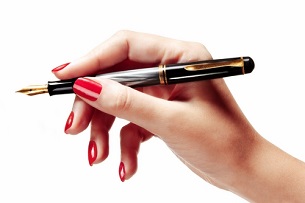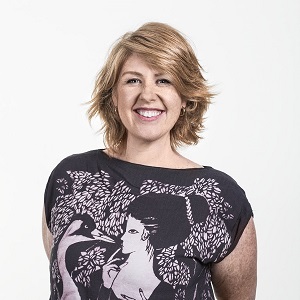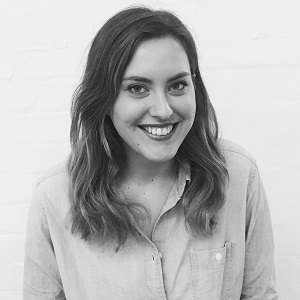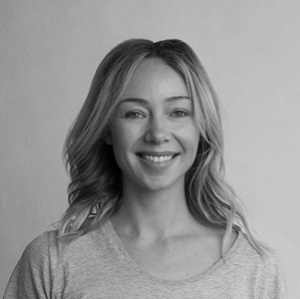
Women in Ladvertising: Female Creatives Who Challenge Australia’s ‘Boys' Club’ Label

When it comes to writing about creative talent in Australia, the topic comes with an intrinsic elephant in the room. ‘Where are all the women?’
With recent industry events causing huge stirs in the conversations surrounding gender diversity, there’s a spotlight on the Australian market. The ratio of senior female creatives to male creatives continues to be the most gender-imbalanced in Australian creative agencies.
The term ‘boys' club’ tends to get thrown around when it comes to Australia, but as much as it’s a catchy descriptive that industry journalists can use to draw attention to inequalities, I feel in the same instance it also detracts from the amazing creative work that comes out of Australia by women.
There are some hugely talented creatives paving the way in Australia’s agencies and their work speaks for itself, regardless of gender. I caught up with creatives at BWM Dentsu, GPY&R Melbourne, The Monkeys, M&C Saatchi, BMF Sydney and 303 MullenLowe Perth on their best work, how they’d like to describe the industry they work in and where they’d like to see it go.
Amy Hollier – Creative Director, BWM Dentsu

Our industry journos love to drop the term ‘boys' club’ to describe creative male leadership in advertising. And it’s true that the Legendary Lunches are predominantly full of straight white men. They got there not just because they were the most talented, but also because they had the most opportunity throughout their lives to display that talent. Their female peers were always just as brilliant, just systematically overlooked.
Now as leaders, they have a responsibility to address the imbalance and create opportunity for others. Because that’s what good leaders do. In his recent comments about what women want, Kevin Roberts killed opportunity for many talented young women. Having said that, the tide is turning. Gender diversity is improving in the ranks of creative departments. The numbers prove that. In the BWM Dentsu Melbourne Creative Department we have 38% female representation. While it’s not yet a 50/50 split, it’s headed in the right direction. And overall, our agency is split 55/45 between women and men respectively.
But more importantly, women are little by little being taken more seriously in their creative opinions. Gone are the days when the ‘girl’ team was put on a fluffy brief, while there was always a guy on a more serious brief. In my experience, the modern male creative leaders are driving this and seeking out opinions that are different to their own. And so they should be. It makes for better work.
I believe this groundswell will rise up through the ranks and there’ll be more female creative leaders in 10 years’ time. Especially if more agencies can be as supportive as mine when it comes to having kids.
Even more importantly, I hope we’ll see true diversity at the table, because that’s the real issue at hand. As agents of popular culture, we have an important role in shaping a country where 28% of people are born overseas. We have a responsibility to showcase the opinions and ideas of more than just white men and women. If Canadian politics can get it right, so can we.
Ellen Fromm – Copywriter, GPY&R Melbourne
 Labels perpetuate issues. Continuously calling Australian agencies a ‘boys club’ will only make people believe that’s what it is.
Labels perpetuate issues. Continuously calling Australian agencies a ‘boys club’ will only make people believe that’s what it is.
I never want to be in the situation where I feel like I’ve been hired because I’m a woman. Screw quotas, I only want to be hired for my folio!
Straight after university, Bella Caruso and I interviewed at almost every agency in Melbourne and I lost count of how many times someone said, “it would be nice to have some girls around”. I think most people are aware there’s a gender imbalance. We don’t need more light on the issue, we just need to do something about it. Oh and while we’re at it, let’s become more culturally diverse too!
I can’t tell you why less women make it into the senior creative roles. It’s definitely not because we’re any less talented. From what I’ve seen though, by the time you have the experience to become a Creative Director, you’re often at the point of your life where you want to start a family. I’m honestly not sure what the answer to that is, but better paid paternity leave would be a start.
Of course the situation will be radically different in 10 years. Golly, we might even have equal pay by then. Haha but seriously, there are so many talented women in the industry at the moment who will make amazing CDs, ECDs and CCOs. We just need the ‘boys club’ to retire so we can move on up…
Barbara Humphries – Senior Creative, The Monkeys

Anything that draws attention to the lack of all kinds of diversity in our industry,
and keeps the conversation moving forward, can only be a good thing. I’d love to see more coverage of agencies who are doing a great job in this area, or at the very least see a more solution-focused commentary.
Of course the work is important, but this is about ensuring all talented people have the same options as they progress. The risk with the gender imbalance becoming a fashionable issue is it becoming unfashionable, so it’s important to keep calling it out and making positive changes in companies until the day it becomes redundant. Ideally, we want a situation where women coming in at junior level feel confident that there’s no limit to where they can go.
There’s a few factors, the industry’s lack of support for those with (or wanting to start) families is a huge one, and not seeing enough other women in leadership roles is also a deterrent. A lot will change in 10 years, but here’s hoping in five years female Creative Director sounds as absurd a term as left-handed Creative Director.
Sharon Edmondston – Creative Director, M&C Saatchi Australia

The discussion on gender diversity is completely unbalanced. It’s negative in the way it positions our industry. We all have personality clashes or encounter insensitive people from time to time, but that’s life. It has nothing to do with ‘men’.
I’ve spoken with incredibly senior women in my industry who have suffered from gender discrimination, and it’s actually been from other women. This doesn’t seem to be acknowledged.
I’ve been in the industry for over 20 years. I’ve had comments directed at me that I’ve found offensive, however I wouldn’t have progressed through my career without the constant and unwavering support of the males around me. To me, it’s unfair that the lack of women in creative roles is being blamed on a ‘boys club’, that’s not the world I live in.
There is no question that gender diversity needs to be embraced, as should all kinds of diversity. Focusing solely on gender is a great start, however there is a wider issue to tackle. No one should ever be given a job based on their gender. Regardless of gender, we need to make a commitment to always put forward the best candidate for the role.
We need to ensure that no one feels as though they are there to fill a gender quota. That would be an infinite amount of steps backwards for gender equality. Instead, we should be looking at how our industry can recruit younger people into creative industries when they are beginning to think about their career options.
There are less women in senior creative positions due to there being a smaller pool of women attracted to creative jobs. This creates a significantly a smaller selection of talent to draw from for promotions.
As long as we continue to have constructive dialogue about creating an inclusive and exciting workplace, we definitely have the ability to create a more balanced environment over the next 10 years.
Right now, the media is sensationalising the notion of the ‘boys club’. If I was younger and thinking about a career as an advertising creative, I’d be worried about walking into a male dominated job where I would need to censor my opinions and fight for every opportunity. To be honest, I wouldn’t be where I am today; I would have been completely put off… I would have missed out on a brilliant career surrounded by incredibly talented people.
Rosita Rawnsley-Mason - Art Director, BMF Sydney
 While it’s definitely valuable to be having the discussion about the lack of women in advertising, I think focusing solely on the “boys’ club” mentality as the primary cause of the problem, is missing some other major points.
While it’s definitely valuable to be having the discussion about the lack of women in advertising, I think focusing solely on the “boys’ club” mentality as the primary cause of the problem, is missing some other major points.
While there is almost certainly some bias towards males when creatives first enter the industry, and a lack of solid role models for young women as they fight to prove themselves in a very male-dominated field, I think the biggest issue is how to retain women long term and keep them on track to becoming senior creative figures.
Of course talent and work is important, however if agencies genuinely want to keep female creatives and build a more balanced creative industry that better caters to their consumers, then they have to accept that women take a slightly different journey to the top and will need their support in making that happen.
As a mum who left the industry to have children and has only recently returned, I can honestly say: it’s not the men that scare me, it’s the hours!
I have no doubt that one of the biggest barriers to woman reaching senior advertising positions is the challenge of juggling a full time creative role with the demands of being a parent.
Agencies are often more focused on the hours you work rather than how efficient you are with your time, or the value you add.
Working mothers are incredibly hard working and though they often no longer have the luxury of long lunches, they have not lost their drive to make great work.
They also offer amazing insights into their lives. They are, after all, the world’s largest group of consumers.
Having now come on board at BMF Sydney, which has created a flexible workplace that embraces parents, I can see that the tide is starting to turn.
If more agencies encouraged mothers to stay on board, offering part time opportunities and accepting the need for more manageable hours, then the industry would stop losing so many talented women.
By supporting mothers when they need it, agencies will have strong, creative women perfectly placed to tackle senior roles in the future.
Melissa Hawkett - Junior Art Director 303 MullenLowe Perth
 The ‘boys' club’ coverage is positive in the sense that we’re talking about the issue. But as a way to talk about it, it’s negative. Focusing on it as an issue will only bring awareness to the problem, rather than working on a solution. Instead, more attention could be given to the restrictions and challenges women in agencies face, highlighting the reasons behind gender diversity issues, and starting conversations on how to fix them.
The ‘boys' club’ coverage is positive in the sense that we’re talking about the issue. But as a way to talk about it, it’s negative. Focusing on it as an issue will only bring awareness to the problem, rather than working on a solution. Instead, more attention could be given to the restrictions and challenges women in agencies face, highlighting the reasons behind gender diversity issues, and starting conversations on how to fix them.
If conversations about women and their achievements, without comment on gender diversity, become a normal and common part of media communications, I think over time gender diversity will improve.
I want to be known for my ideas and my achievements. If I got attention purely for being female, and the need to highlight women, then that would be disappointing. I think we can talk about gender diversity, and we can talk about people’s work and achievement. These don’t need to be in the same conversation.
I think at the moment we are still feeling the impact of history. Workplaces were originally set up for those whose responsibilities were not both children and work, and there have not been structures put in place to support this. If anything, you are seen as neglecting one or the other.
For me, having to balance the two is a scary thought. As an industry, advertising doesn’t lend itself to balance. The hours are long, and the work is demanding. And this is why I think it hasn’t achieved the same gender diversity as other industries.
And in ten years? Sure, just look back ten years.













